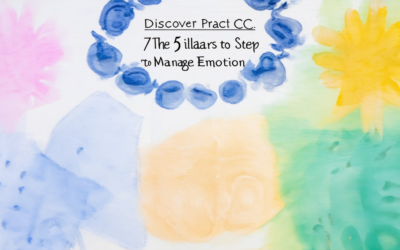Exploring the intricacies of mindful thinking habits can unlock a pathway to a more balanced and fulfilling life. By cultivating intentional awareness and purposeful actions, individuals can navigate daily challenges with clarity and resilience. This comprehensive guide delves into the core principles of mindful thinking, offering practical strategies to foster a mindset rooted in presence, patience, and self-awareness. From understanding the 7 Cs of mindfulness to discovering the power of concentration and compassion, this exploration sheds light on how these practices can transform your approach to decision-making, creativity, and problem-solving. Whether you’re seeking to enhance productivity, reduce stress, or cultivate deeper connections, the insights presented here serve as a roadmap for embracing a mindful lifestyle. Join us as we unravel the essence of mindful thinking habits and unlock the potential for lasting personal growth.

The 7 Cs of Mindfulness Explained
Mindfulness is a practice that allows individuals to live fully in the present moment, fostering mental clarity, emotional balance, and overall well-being. One effective framework to understand and implement mindfulness is the 7 Cs of mindfulness, which provide a holistic approach to cultivating awareness and compassion. Below, we delve into each component:
1. Competence
Competence in mindfulness involves developing the skills and knowledge needed to practice effectively. This includes understanding techniques like meditation, breathing exercises, and body scans. Competence also extends to recognizing when and how to apply mindfulness in various life situations, such as stress management or decision-making.
2. Confidence
Confidence arises when individuals trust their ability to handle life challenges with calmness and poise. Building confidence in mindfulness practice helps people stay grounded during uncertain times, reducing anxiety and fear. Over time, this confidence grows as they witness their own progress and resilience.
3. Character
Character refers to the moral and ethical qualities that define someone’s personality. In the context of mindfulness, this involves embodying values like kindness, empathy, and integrity. Practicing mindfulness fosters these traits, helping individuals become more authentic and compassionate in their interactions.
4. Connection
Connection is about building meaningful relationships and feeling a sense of belonging. Mindfulness practices, such as gratitude journaling or empathetic listening, cultivate deeper connections with others. This component emphasizes the importance of social bonds and community in supporting mental health and well-being.
5. Contribution
Contribution involves using one’s abilities to make a positive impact on the world. Mindful living encourages individuals to align their actions with their values, contributing to the greater good through acts of service, creativity, or simply being present for others. This fosters a sense of purpose and fulfillment.
6. Creativity
Creativity is the ability to think innovatively and approach problems from new angles. Mindfulness can unlock creative thinking by quieting the mind and allowing intuitive solutions to emerge. Whether in personal growth or professional endeavors, creativity is a powerful outcome of mindful practices.
7. Curiosity
Curiosity drives lifelong learning and exploration. Mindfulness nurtures this trait by encouraging individuals to observe their thoughts and experiences with curiosity, rather than judgment. This mindset promotes continuous growth and adaptation, essential for navigating an ever-changing world.
By embracing the 7 Cs of mindfulness—competence, confidence, character, connection, contribution, creativity, and curiosity—you can cultivate a rich, meaningful life that thrives on introspection, compassion, and purpose. Start small, integrate mindfulness into daily routines, and watch your journey unfold with renewed vitality and clarity.
What Are Mindful Ways of Thinking?
Mindful thinking involves being fully present and engaged in the moment while maintaining awareness of your surroundings and your internal state. Here are some mindful practices that can help cultivate this mindset:
- Meditation: Regularly practicing mindfulness through meditation can train your brain to stay present and reduce stress.
- Breathing Exercises: Using techniques like deep breathing can help center your thoughts and promote relaxation.
- Gratitude Practice: Reflecting on things you’re grateful for can shift your focus to positive aspects of life.
- Focusing on the Present Moment: Engage fully in activities by paying attention to sensory details and emotions.
- Setting Intentions: Begin each day with a clear intention to approach challenges with calmness and clarity.
- Practicing Compassion: Being kind to yourself and others fosters a more positive mental state.
These practices can enhance your ability to think mindfully, leading to better decision-making and emotional balance. For more insights and resources, visit Live On Blogs .

The Five R’s of Mindfulness
The practice of mindfulness is rooted in several key principles, often referred to as the “Five R’s” of mindfulness. These principles guide individuals in cultivating awareness, intention, and balanced reactions to life experiences. Here’s a breakdown of each:
- Recognizing : This involves becoming fully present in the moment and acknowledging your surroundings and internal states without judgment. Recognizing allows you to observe your thoughts, feelings, and sensations as they arise.
- Responding : Instead of acting impulsively, mindfulness encourages a deliberate response. This means pausing and choosing how to react to situations, rather than being controlled by automatic thoughts or emotions.
- Reflecting : Reflection is the process of reviewing your experiences with curiosity and compassion. It involves looking back on your day, identifying patterns, and learning from both successes and challenges.
- Releasing Attachments : Attachments refer to clinging to outcomes, possessions, or ideas. Practicing mindfulness helps you release these attachments, fostering greater freedom and peace of mind.
- Setting Intentions : Before beginning a mindfulness practice, setting an intention helps clarify your purpose. This could be as simple as committing to staying present during a difficult conversation or choosing to approach a task with patience.
By integrating these five R’s into daily life, individuals can enhance their mindfulness practice, leading to improved mental health and emotional well-being.

What are the 3 Cs of mindfulness?
Mindfulness is often broken down into three core components, known as the “3 Cs” of mindfulness. These principles guide individuals in developing a deeper understanding and practice of mindfulness, making it easier to integrate into daily life.
- Curiosity :
Curiosity is the desire to explore and understand the present moment with interest. It involves asking questions, noticing details, and embracing uncertainty. By fostering curiosity, individuals learn to approach experiences with fresh perspectives and greater awareness. - Compassion :
Compassion involves kindness and empathy toward oneself and others. It encourages individuals to observe their thoughts and feelings without judgment, fostering a sense of connection and understanding. Practicing compassion helps in building stronger relationships and reducing stress. - Calm Center :
A calm center refers to the ability to remain composed and centered during challenging situations. This involves managing emotions effectively, staying focused, and responding thoughtfully rather than reactively. Developing a calm center helps in maintaining emotional balance and clarity in decision-making.
By focusing on these three Cs—curiosity, compassion, and calmness—mindfulness becomes a powerful tool for personal growth and emotional well-being.
The 3-3-3 Rule in Mindfulness
The 3-3-3 rule is a mindfulness technique designed to help individuals stay grounded and reduce anxiety during overwhelming moments. Here’s a breakdown of how it works:
- Identify Three Objects : Begin by noticing three distinct objects in your immediate surroundings. These could be anything—from a book on the shelf to a plant in the corner. The goal is to focus on the present moment and engage your senses.
- Listen to Three Sounds : Next, take three deep breaths and listen to three different sounds around you. This could be the sound of traffic outside, birds chirping, or the hum of a fan. Pay attention to the variety and timbre of each sound.
- Move Three Body Parts : Finally, move three different body parts. This could involve stretching your arms, rolling your shoulders, or wiggling your toes. The act of movement helps release tension and brings awareness to your physical presence.
This practice is often recommended for its ability to center the mind and provide a sense of calmness. It’s a simple yet effective tool for mindfulness enthusiasts looking to reconnect with the present moment.

The 4 R’s of Mindfulness
The practice of mindfulness is often broken down into key principles that guide its application. One popular framework is the “4 R’s” of mindfulness, which provide a structured approach to cultivating awareness and managing mental wellness effectively. These principles are rooted in mindfulness practices and aim to enhance emotional intelligence and overall well-being.
- Recognize
- Definition : Recognizing involves becoming fully present in the moment and acknowledging your surroundings, thoughts, and emotions without judgment.
- Benefit : This helps in building self-awareness, allowing you to identify your mental state and respond appropriately.
- Practice : Techniques like mindful breathing or observing your environment can help you develop this skill.
-
Reframe
- Definition : Reframing involves reevaluating negative thoughts or perspectives and choosing a more balanced or constructive viewpoint.
- Benefit : This fosters resilience and reduces the impact of stress or challenging situations.
- Practice : Journaling or discussing with others can assist in reframing negative thoughts into more positive ones.
-
Relax
- Definition : Relaxation is about calming the body and mind through techniques like deep breathing, meditation, or progressive muscle relaxation.
- Benefit : It counteracts the physical effects of stress, promoting a sense of calmness and stability.
- Practice : Incorporating regular mindfulness sessions or yoga can help achieve this state.
-
Respond
- Definition : Responding involves making intentional choices based on your observations rather than acting impulsively.
- Benefit : This enhances decision-making abilities and promotes healthier interpersonal relationships.
- Practice : Reflective listening or pausing before reacting can help in developing this skill.
By integrating these four principles into daily life, individuals can cultivate greater mindfulness, leading to improved mental wellness and a more balanced existence.




0 Comments